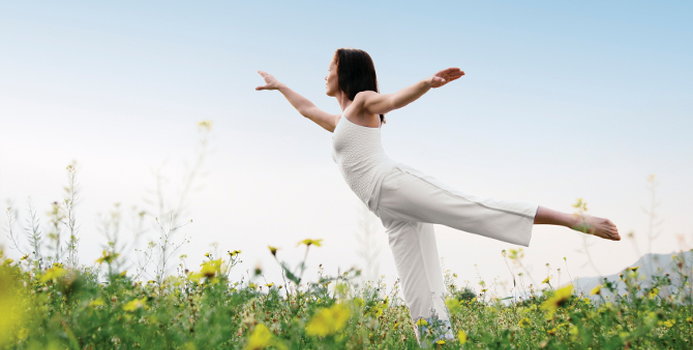Muscle injury can range from mild to serious with potential long term effects. There are many striated levels of muscle which when injured can present as a palpable bruise or a deep, tiny muscle pull that nags and nags. Often, whether from an intentional workout or from trauma, the muscles can actually tear. Either way, when the muscle is capable of rehabilitation there are different approaches that can be considered. Yoga is a slow, meditative choice capable of gently nursing your muscle injury back to optimal health.
Yoga: Muscles, Reflexes and BreathingYoga requires balance and patience. As each yoga pose is achieved, slow, deep stretching opens up the muscles allowing increased blood flow and detoxification. Each pose works a specific muscle group, so if there is an injury not only will it address that, it will strengthen the supporting musculature. In addition, yoga will teach you how to breathe. Many people are shallow breathers robbing their muscles of the essential, oxygenated, nutrient-rich blood they need. Yoga will help you re-think your breathing technique creating optimal health for your muscles which in turn will speed repair and maintain elasticity. Some ways that yoga works as a muscle injury remedy is by relaxing specific natural reflexes that automatically contract the muscles. These are called spinal reflexes which is when a nerve impulse is fired into the spinal cord which responds with the appropriate message overriding the brain. The three spinal reflexes that yoga can enhance and manipulate are:
- The Myotatic Reflex: Also known as "the stretch reflex", this response causes a muscle that has been lengthened to automatically tense up if put into a stretched position. In yoga, you can learn to stop this reflex using mind and breathing techniques which enable a potentially injured muscle to receive an allowable stretch helping reduce inflammation and residual pain.
- The Inverse Myotatic Reflex: Holding a yoga pose for approximately twelve to fifteen seconds will cause this reflex to respond. It works by enabling the stretched muscle group to eventually relax. Again, if there is an injury the muscle will benefit when this reflex responds. It is also effective during acute crisis such as muscle spasms.
- The Reciprocal Relaxation Reflex: When a shortened muscle group is tensed this reflex causes the stretched muscle group to relax. It is used to stretch any muscle in your body thus capable of reaching difficult places that have been injured, such as the intercostal (rib) muscles and some smaller back muscles.
As mentioned, each pose targets a specific muscle group. Below are some of the more popular positions and how they may apply to a specific injury.
- Sit Easy - This is a cross legged sitting pose with intermingled raised arm positioning. It strengthens the lower back and opens the groin and hips.
- Dog Cat - Position yourself on all fours with extended and retracted spine movement. This helps the spinal (erector) muscle group.
- Cobra - Lying on your stomach with forearms and palms flat on the floor and raising your chest. Helps open the chest and strengthen the back and arms.
- Downward Facing Dog - Face down as if doing a push-up. Raise bottom to ceiling keeping arms and knees straight. Stretches back and hamstrings.



